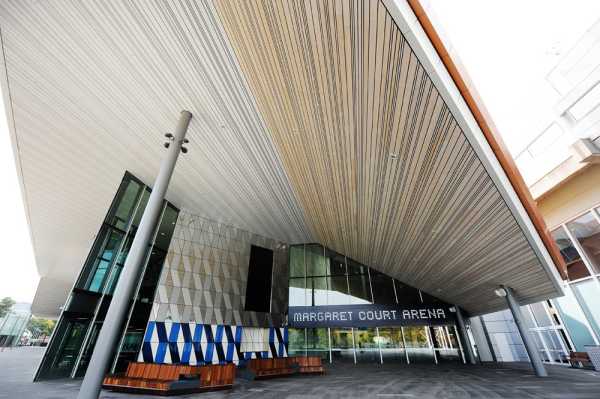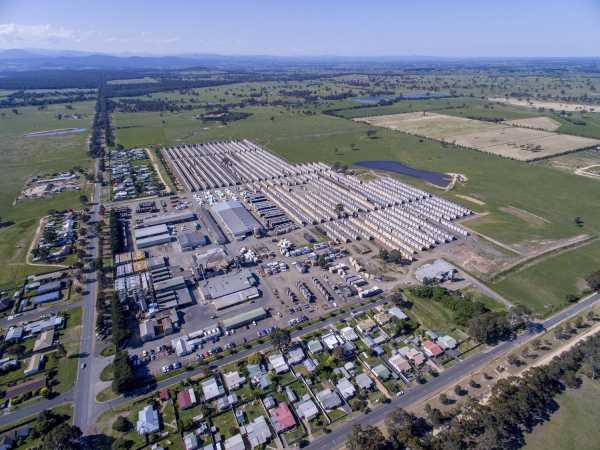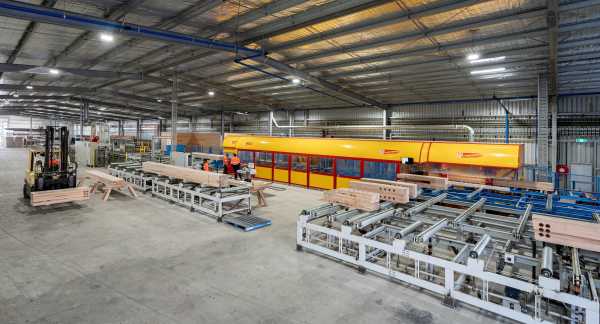ASH rises to renewability challenge
06 July 2021
Nicole Bittar
If ever an enterprise was tailored towards endorsing sustainable timber as the ultimate renewable, it would be epitomised by Australian Sustainable Hardwoods (aka ASH). In a nutshell, ASH offers a diverse range of timbers and what was a single-species operation evolved to produce several species from various suppliers — including plantations, farm forestry, regrowth native forests and imported natural forests.
However, it’s not so much what this 30-year-old, 150-plus-employee Victorian company does, but how it does so that makes ASH truly stand out.
The ‘ultimate renewable’ is not merely a catchphrase. Marketing manager Megan Para explains the ASH rationale behind its sustainability coups.
“You must understand why sustainability matters in the first place,” Megan says. “We have a climate and biodiversity emergency competing with an emerging-resource emergency. Timber uniquely represents a commercial opportunity to overcome these concerns in an attractive, cost-effective manner.”
When balancing these business constraints with environmental factors, ultimate renewability provides fresh emphasis.

Renewables are often discussed in relation to energy production when compared with finite energy sources.
“The ‘ultimate renewable’ label is an opportunity for timber to be acknowledged as a renewable, but also to encourage people to stop and think about what makes something renewable,” Megan says. “Comparatively, timber is clean, green, renewable, sustainable and really is the ultimate renewable.”
As such, timber helps tackle the climate and biodiversity emergency in several ways. It is widely known that timber stores carbon for life, but Megan quantifies this concept.“(Timber) uses significantly less energy to produce a finished good (embodied energy) so, for example, one cubic metre of wood comparatively stores one metric tonne of carbon when replacing one cubic metre of construction concrete. The more forests we grow for timber, the more carbon we can sequester. Importantly, if planted as a biodiverse forest, increasing forest cover for timber production can also increase potential habitat and reduce the impacts of catastrophic bushfire on our indigenous wildlife.

“Timber also helps tackle the resource emergency. Not just in the obvious ways (being a renewable product) but also from the perspective of closed loop cycles, recyclability and biodegradability. When time is up within an application, timber can easily be repurposed or re-machined into another timber component. At end of life, timber can be burned as a renewable energy source – emitting only the carbon that was captured during growth and captured again during regrowth.”
Equally, Megan says the intangible advantages of timber should not be overlooked.
“Derived from a concept known as biophilic design; the practice of connecting humans to nature on physical, mental and social levels – which can affect personal wellbeing, productivity and societal relationships. Using timber in design has known benefits, like improved air quality through humidity moderation, reduced blood pressure, heart rate, stress levels, emotional state and level of self-expression.”
True to word, ASH has an on-site, full-time physiotherapist who conducts warm-up sessions for production staff before each shift.
These holistic emphases are also indicative of ASH’s sustainability policies and certifications. “For example, ASH is PEFC (Program for the Endorsement of Forest Certification, known as Responsible Wood in Australia) Chain of Custody certified, this then helps specifiers make a conscious decision when selecting manufacturers due to their certification. PEFC Chain of Custody requires third party auditing, which means ASH also gets audited to uphold our certification. This is important to us and we encourage others to do the same because transparency and verification are key to delivering results. Sitting between the forests (supply) and the consumer (end user) we hold a powerful position where we can demand the supply chain are also held to the same principles and that we, as a country, never take more than we can grow and continue to invest in protecting the forest estate.”

Central to ASH’s stamp on sustainability is its disparate client base, quality and choice of brands or products. These include GoodWood Victorian ash, MASSLAM (glue-laminated timber systems), Iron Ash, Plantation Oak, American Oak by ASH, Australian Oak and SupaSpan (structural timbers).
ASH operates six on-site manufacturing lines to capitalise on timber — from regrowth log to finished product. These services include mass-timber moulding, laminating, finger-jointing, deep splitting, set length docking and engineered flooring. Timber species include Victorian ash, American Oak, Mountain Grey Gum, Plantation Oak and Tasmanian Oak. Megan and all staff are justifiably proud of the company’s extensive reach in every facet of the sustainable timber industry.
She cites the stair components range as a prime example and milestone achievement. “Over a period of two decades, we commenced and now successfully implemented a range of hardwood components for the stair market that successfully increased efficiencies and decreased manufacturing costs for the entire Australian staircase manufacturing market,” Megan says. “This has grown to become the most successful hardwood staircase component used by stair manufacturers in Australia.”

The glulam project at Margaret Court Arena, Melbourne Park, fulfils ASH’s aim to be the first Australian sports venue to achieve a LEED construction ‘gold’ rating. “Using local and sustainable timbers was a must,” Megan says. “Internally, glue-laminated 6.6m structures were the standout, circling the walkways. Externally, GoodWood Victorian ash battens fixed to the eaves welcome tennis goers.”
Likewise, the LaTrobe Creative Precinct is a visionary concept, both aesthetically and sustainably.
“What makes this project truly unique is the clever design by Katsieris Origami who envisioned ‘trees’ made from our MASSLAM columns,” Megan says. “The ‘trees’ demonstrate the best in timber manufacturing and engineering, having been manufactured by ASH in conjunction with technical partners TGA Engineers.”
The design appears simple, but it features complex, concealed CNC and bracketry that intricately showcases the MASSLAM line.
Most recently, The Martin by Orbis Constructions is another major achievement that has helped to place ASH as the largest importer of American Oak to Australia.
With a host of other projects on the go or in the pipeline for ASH, the future of sustainable timber as the ultimate renewable seems assured.